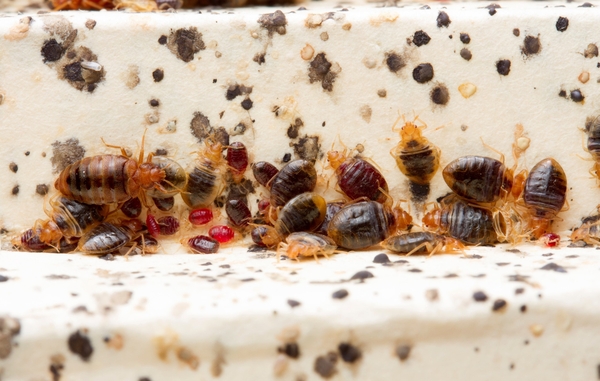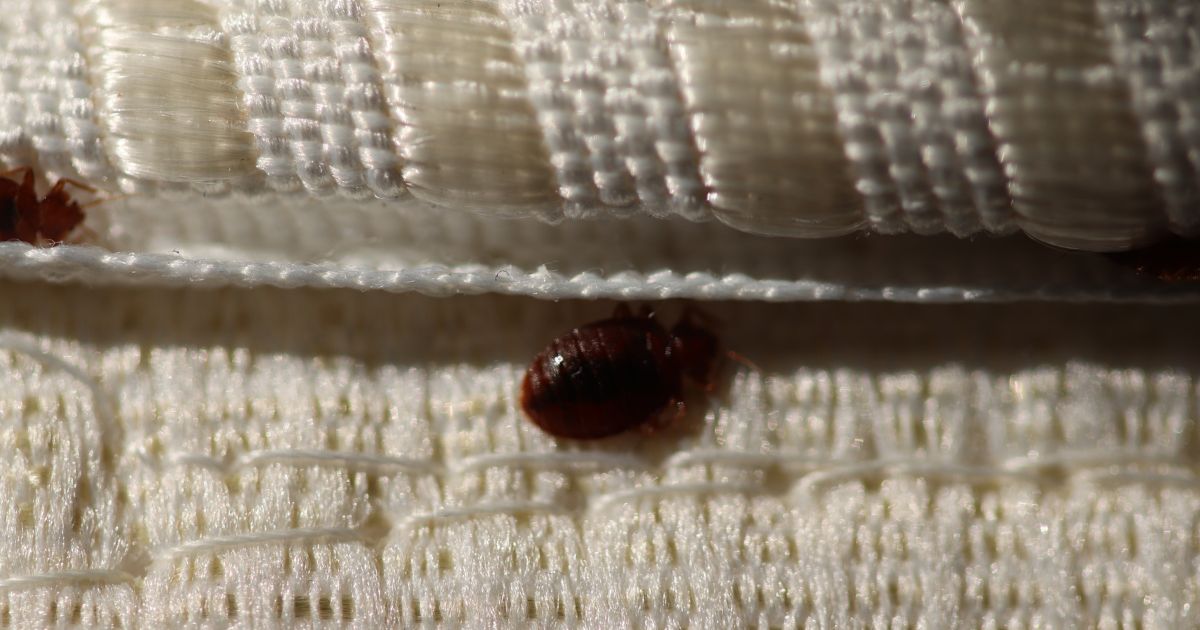To keep from transferring bed bugs while moving, inspect all furniture and belongings for signs of infestation. Seal any infested items in plastic bags and keep them isolated throughout the move.
When unpacking, carefully inspect and clean all items before bringing them into the new space. Moving to a new home can be an exciting time, but it’s important to be mindful of potential bed bug infestations that could be transferred during the process.
Ensuring that your belongings are free of bed bugs before moving is crucial in preventing an infestation in your new home. By following a few key steps and being vigilant during the moving process, you can greatly reduce the risk of transferring bed bugs and enjoy a smooth transition to your new residence.

Credit: www.excelpestservices.com
Inspecting For Bed Bugs Before Moving
Before you move to a new place, it’s crucial to inspect for bed bugs to prevent transferring them. Follow these steps to ensure your new home stays bed bug-free.
Checking Furniture And Bedding
- Thoroughly examine all furniture, including bed frames and mattresses, for any signs of bed bugs.
- Look for live bugs, dark spots, or shed skins that indicate a bed bug infestation.
- Inspect all bedding, like sheets and pillows, for any suspicious markings or bugs.
Examining Cracks And Crevices
- Check any cracks or gaps in walls, baseboards, and furniture where bed bugs may hide.
- Use a flashlight to thoroughly examine these areas for any bed bug activity.
- Seal all cracks and crevices to prevent bed bugs from finding hiding spots.
Preparing Furniture And Belongings
When preparing furniture and belongings for a move, taking precautions against transferring bed bugs is crucial.
Disassembling Furniture
- Disassemble furniture to expose any hidden bed bugs.
- Inspect all crevices and joints thoroughly.
- Vacuum furniture and wipe it down carefully.
Sealing Items In Plastic Bags
- Seal items in plastic bags to prevent bed bugs from spreading.
- Label each bag with the room and item description.
- Use clear bags for easy identification.
Treating Bed Bugs Proactively
Prevent bed bug transfer during a move by taking proactive measures. Seal belongings in plastic covers and inspect furniture for signs of infestation. Utilize professional pest control treatments and vacuum crevices to eradicate any potential bed bugs.
Using Heat Treatment
Bed bugs are notorious for being resilient and difficult to eliminate. However, one effective method of treating bed bugs is through the use of heat. By exposing infested items to high temperatures, bed bugs, as well as their eggs, can be effectively eradicated. Heat treatment works by raising the temperature in the affected area to a level that is lethal to bed bugs.Applying Insecticides
Another proactive approach to treating bed bugs is by applying insecticides. These chemical-based solutions are specifically formulated to target and eliminate bed bugs. When choosing an insecticide, it is important to opt for a product that is specifically designed for bed bug control and is approved for indoor use. Proper application is crucial to ensure maximum effectiveness and safety.Implementing heat treatment and applying insecticides are two key strategies to proactively combat bed bugs during a move. Heat treatment eliminates bed bugs by subjecting them to high temperatures, while insecticides target and eradicate these pesky pests. By taking these actions, you can minimize the risk of transferring bed bugs to your new home and ensure a bed bug-free environment for you and your family.
Credit: content.ces.ncsu.edu
Protecting Personal Items
Moving places while dealing with bed bugs can be a daunting task. To ensure you don’t transfer these unwanted pests to your new home, it’s essential to take proactive measures to protect your personal items. Some practical steps can be taken to minimize the risk of spreading bed bugs while moving include cleaning and vacuuming and using bed bug-proof encasements.
Cleaning And Vacuuming
To prevent the spread of bed bugs, thoroughly clean and vacuum all items before packing them for the move. Use a brush attachment to vacuum items such as furniture, mattresses, and upholstery, ensuring to cover all seams, folds, and crevices where bed bugs could hide.
Using Bed Bug-proof Encasements
Invest in bed bug-proof encasements for items such as mattresses and box springs. These encasements not only protect your belongings during the move but also trap any existing bed bugs inside, preventing them from spreading to other items during transportation.
Managing Bed Bugs During The Move
When moving, the last thing you want to bring along to your new home are bed bugs. These relentless pests can easily hitch a ride on your belongings and multiply in the new environment. To ensure a bed bug-free move, it’s crucial to manage the risk of transferring bed bugs during the relocation process. By taking preventive measures and being meticulous, you can protect your new living space from these unwanted intruders.
Using Protective Covers During Transportation
- Utilize specially designed protective covers for mattresses, box springs, and furniture items to safeguard them from bed bugs.
- Ensure that all items are fully encased in covers and securely sealed to prevent any potential bed bug infestations.
- Inspect the covers prior to packing to ensure they are free from any existing bed bug presence.
Avoiding Infested Areas
- Prioritize moving items from areas known to be free of bed bugs, such as parts of the house that have been thoroughly inspected and treated.
- If moving from or through a potentially infested location, take extra precautions by sealing off items and using protective measures to prevent any bed bugs from latching on.
- Be vigilant and careful when handling and packing items, particularly in areas where bed bugs are suspected to be present.
Taking Precautions In New Living Spaces
A crucial step in preventing the transfer of bed bugs while moving is taking precautions in new living spaces. By thoroughly inspecting the new residence and treating potential infestations, you can significantly decrease the chances of bed bugs hitching a ride to your new home.
Inspecting The New Residence
When moving into a new living space, it’s essential to inspect the premises for any signs of bed bugs. These tiny pests can hide in cracks, crevices, and even electrical outlets, so be sure to conduct a thorough search. Inspect all furniture, including mattresses, sofas, and chairs, as bed bugs often take shelter in these areas. Look for dark spots or stains on the bedding, indicating the presence of bed bug droppings. Pay extra attention to seams, tufts, and any other distinctive hiding places bed bugs may utilize.
| Bed Bug Inspection Checklist |
|---|
| Check mattress seams and edges |
| Examine cracks and crevices in furniture |
| Inspect electrical outlets and picture frames |
| Look for dark spots or stains on bedding |
| Pay attention to baseboards and carpets |
Treating Potential Infestations
If you discover any signs of a bed bug infestation during your inspection, it’s crucial to address the problem promptly. Treating potential infestations can help prevent the transfer of bed bugs while moving and protect your new living space. Start by contacting a professional pest control company to assist with the eradication process. They have the expertise and tools needed to effectively eliminate bed bugs. Ensure that all infested furniture or items are properly treated before bringing them into your new home. Taking these precautions will help safeguard against the spread of bed bugs and ensure a pest-free living environment.
- Contact a professional pest control company for assistance
- Ensure proper treatment of infested furniture or items
- Follow the recommended eradication process
- Dispose of any heavily infested items that cannot be treated
Educating Others Involved In The Move
Educating others involved in the move is crucial to prevent the spread of bed bugs to new locations.
Informing Movers And Helpers
When moving, clearly inform all movers and helpers about the potential risks of bed bugs. Offer guidance on how to spot and avoid transferring them.
- Provide instructions for checking personal belongings before handling them.
- Emphasize the importance of using protective coverings for furniture and boxes.
- Encourage regular inspections during the move to catch any signs of bed bugs early.
Offering Advice To New Neighbors
Extend your responsibility by advising new neighbors on the possibility of bed bug transference during a move.
- Suggest safe practices to prevent bed bugs from spreading within the community.
- Recommend professional pest control services for both prevention and treatment.
- Share resources for further information on bed bug prevention and control.
Hiring Professional Pest Control Services
Seeking expert advice and professional assistance can help prevent the spread of bed bugs during a move.
Seeking Expert Advice
Consulting with pest control professionals can provide valuable insights on bed bug prevention strategies.
Considering Preventive Treatments
- Implementing protective measures before the move can reduce the risk of bed bug infestations.
- Professional pest control services can offer proactive solutions to safeguard against bed bugs.

Credit: protectabed.co.za
Frequently Asked Questions On How To Keep From Transferring Bed Bugs While Moving?
How Can I Prevent Bed Bugs While Moving?
To prevent bed bugs while moving, use plastic mattress covers, inspect furniture, seal cracks, and hire professional pest control services to treat your belongings.
Can Bed Bugs Be Transferred Through Clothing?
Yes, bed bugs can hide in clothing and be transferred to new locations, so it’s crucial to wash and dry clothing on high heat to kill any bed bugs.
Do Bed Bugs Hide In Moving Boxes?
Bed bugs can hide in moving boxes, so it’s essential to inspect and seal boxes, avoid using used boxes, and consider using plastic containers for moving.
What Precautions Should I Take When Moving Furniture?
When moving furniture, thoroughly inspect and clean all items, consider treating with insecticides, and wrap items in plastic to prevent bed bug transfer.
Conclusion
To safeguard your new home from bed bugs during a move, prevention is key. Follow these proactive measures to minimize the risk of transferring these pesky critters: inspect and clean all belongings, seal any potential entry points, use bed bug-proof encasements, and consider professional pest control services.
By taking these precautions, you can ensure a bed bug-free transition and enjoy a peaceful night’s sleep in your new abode.
Related posts:

I’m MD Tanvir, and I bring years of expertise gained from working closely with pest control companies to the forefront. My journey in the industry has inspired me to launch Bug Battler, a platform aimed at equipping people with the know-how to combat pests autonomously. Through Bug Battler, I aim to empower individuals with practical insights to tackle pest infestations effectively.

